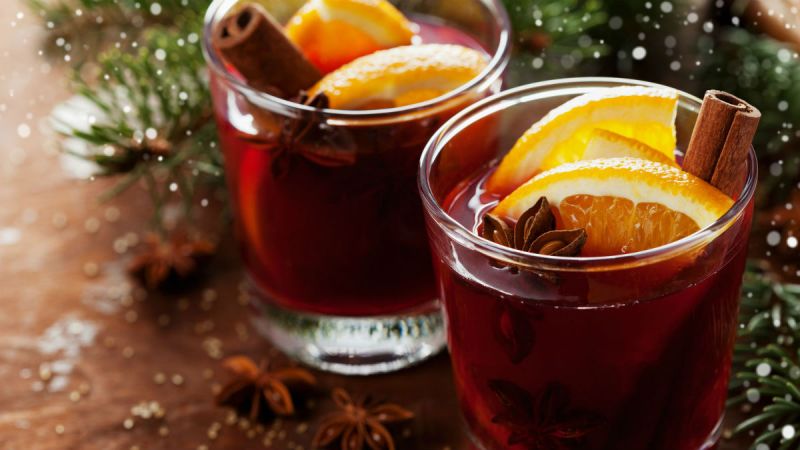
If you’re not familiar, it’s a type of mulled wine that’s popular in Germany and other parts of Europe. Glühwein is typically made in huge batches and served by the flagon at German Christmas markets, and, frankly, we’re baffled as to why it’s not more popular in the States. If you’ve never tried it before, you’re missing out — specially as we enter the coldest, finger-freezing months of winter.
The thing is, there’s not really a hard-set recipe for how to make glühwein. It’s one of those open-ended things that everyone has their own unique take on. That’s not to say you should just jump in and start making it blindly, however. You can definitely botch it and make an undrinkable brew if you’re not careful.
To help guide you on this boozy mission, we’ve outlined a set of open-ended directions that you can tweak and adjust to your liking.

Ingredients
- Red wine (we suggest something dry like Pinot Noir or Cabernet Sauvignon; do not use Merlot)
- Cloves
- Cinnamon sticks
- Orange peels, orange slices, or just a whole orange (whichever you prefer)
- Orange bitters (or liqueur)
- Sugar
Optional additions:
- Nutmeg
- Anise
- Honey
- Lemon or lime
- Brandy
Instructions
- Start by dumping all your wine into a crock pot, then turn it to its lowest heat setting. Alternatively, you can put the wine in a large pot, place it on a stove top, and keep the heat on low.
- Toss in the cloves, cinnamon, and orange. Don’t go overboard — we recommend starting with 5 whole cloves and 2 cinnamon sticks per 750 ml (one bottle) of wine, then scaling up from there. If you’ve got spices in packet form, use one per 750 ml of wine.
- Put a lid on your mixture and let it warm up slowly, giving plenty of time for the spices to mingle with the wine.
- Once it starts to heat up (you should notice condensed alcohol vapor on the lid), stir in some sugar. The amount you add is up to you, but we recommend about 1/4 cup per 750 ml of wine. Start with a little less than that, then gradually add more until you hit your preferred sweetness level.
- While you’re at it, taste for the cinnamon and clove. If the spices are overwhelming, add more wine; if they’re not strong enough, add more spices — but go in small increments no matter what you do.
- Once you’re at optimal sweetness/spice levels, add a few dashes of orange bitters. Stir it in dash by dash until the orange flavor is about as strong as the clove and cinnamon. If you don’t have orange bitters, a couple shots of orange liqueur (such as Cointreau or Grand Marnier) will work just as well.
- Let it cook long enough for the flavors to mingle (usually around 20 to 40 minutes total) and then serve it piping hot. Garnish with some orange peel if you want to be fancy, or maybe even a cinnamon stick if you want to be downright swanky.
The best advice we can give you is to treat it like an ongoing experiment. Taste your mixture often and make little adjustments along the way until you’re satisfied with the taste.
Once you’ve got the basics down, you can add in your own flourishes: some lemon or lime to give it a bit more zing, some brandy to make it warmer on the way down, or other wintry spices. Nutmeg makes it feel more Christmasy, anise gives it a subtle liquorice-like note, and vanilla adds a silky touch. We’ve even seen people throw in pieces of fresh ginger. Your personal touches will make this wintertime favorite a tradition for years to come.
If you’re craving something more chocolatey, try out this recipe for red wine hot cocoa. And if you need some tunes to listen to while you’r whipping up all this booze, may we suggest our Christmas playlist?
Editors' Recommendations
- Your new favorite winter cocktail is red wine…hot chocolate?
- How to Make an Eggnog and Mix into 6 Cocktail Recipes
- Tannat May Be Your New Favorite Barbecue Wine


